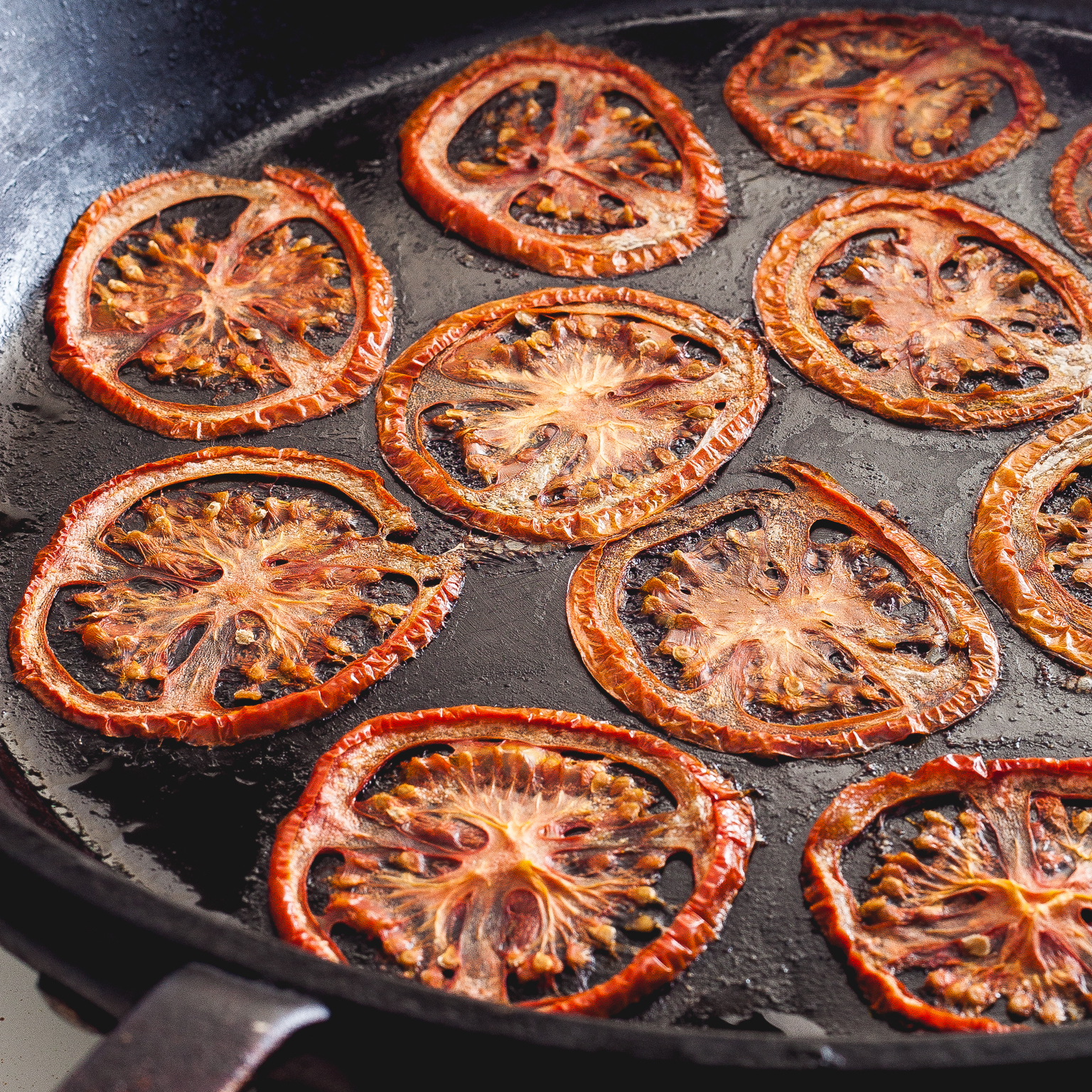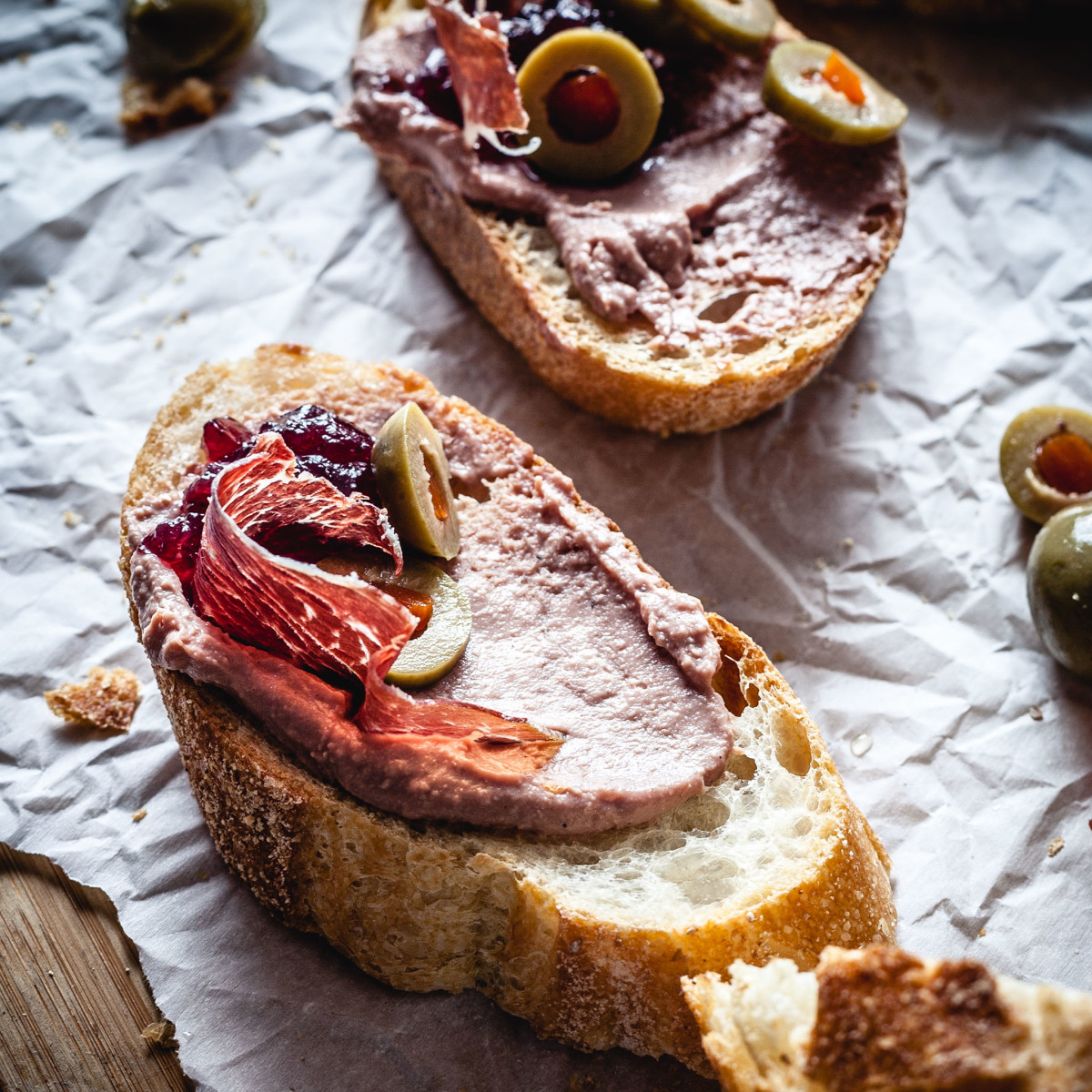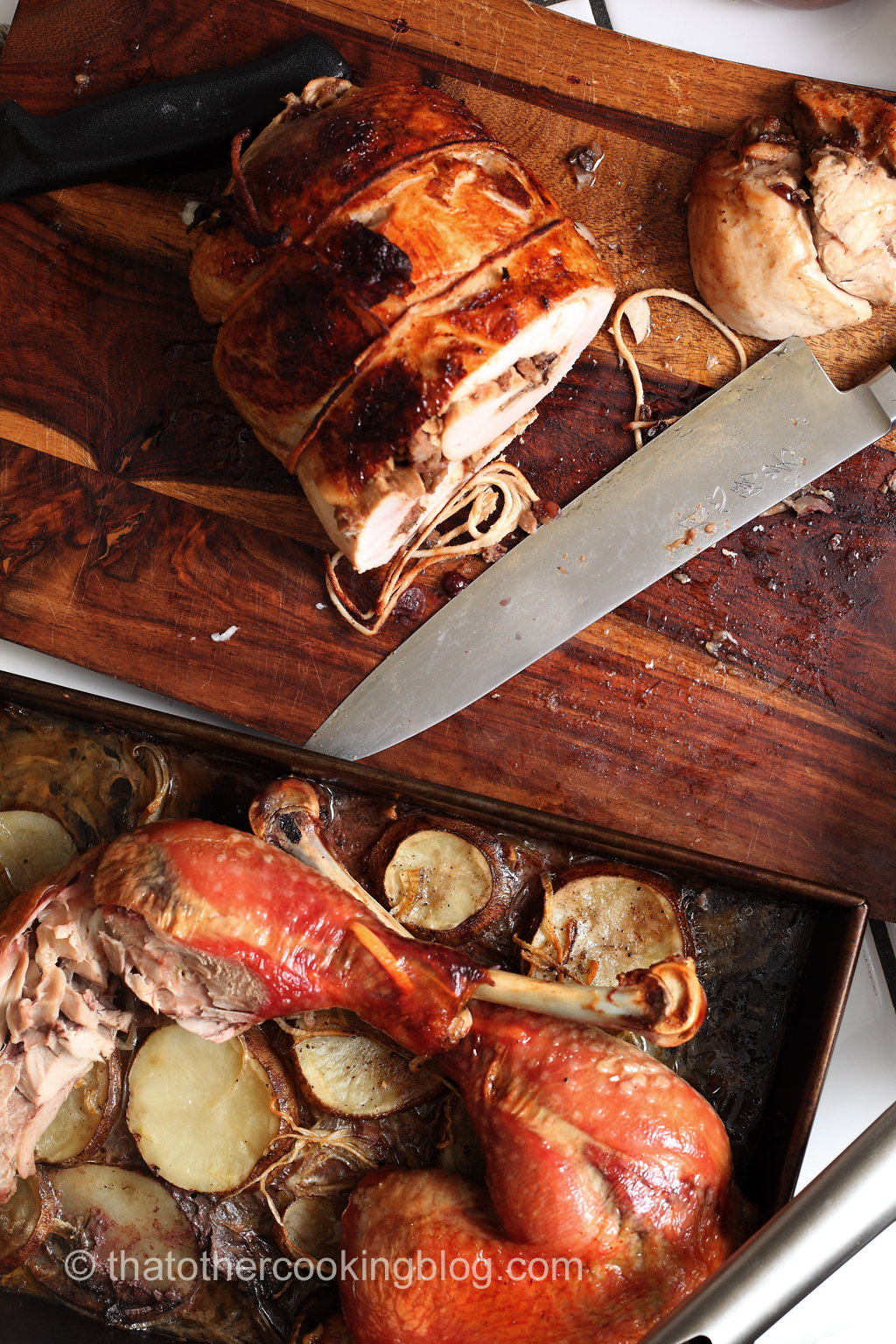Dehydration or drying is one of those cool things one does in the kitchen without thinking about it too much. Like reducing a sauce for example. The whole point is not so much about thickening the liquid but to concentrate the flavor. You can thicken up a liquid by adding thickeners anyways.
By means of dehydration, the concentration of flavour is possible (there’s less water diluting it) and since you’re also applying heat over a long period of time, even though it’s low heat, the maillard reaction can take place and in many cases if not all, it enhances and deepens the flavours of the ingredients. Searing a steak is a form of dehydration for example. The surface of the steak is getting dehydrated by the searing hot pan/oil. Once the water is gone, browning can take place.
Today I will focus on tomatoes because they make a great example. Tomatoes are pretty much all water which makes dehydrating them a lot of fun.
There are many ways to go about doing this, but I’m lazy and the warmer months of the year are already here. I will write about each practical way of dehydrating foods in upcoming posts but I will list them here now for now:
- Using a food dehydrator (obviously).
- Using the microwave.
- Using the oven.
- Using the stovetop.
- Using the sun.
- Using salt.
- Some combination of the ones listed above.

It’s important to note that there are factors that affect dehydration quality and speed, the main two I usually care about are:
-
Surface area
The very same idea behind hanging clothes out to dry in the sun is behind cooking and dehydrating. Maximize the surface of the food that is exposed to heat and the easier and quicker heat can do it’s job. That’s one of the reasons why we dice and slice ingredients or don’t crowd a pan with mushrooms or steaks.
-
Relative humidity
The dryer the relative humidity of the room is in which we’re cooking, the quicker dehydration will take place. In 100% humidity is pretty much impossible to dehydrate anything. I remember visiting a very humid area in Venezuela near San Cristobal. Rio Bobo. The humidity was such that, our clothes and even the bed sheets were partially wet all day long. It was impossible to stay dry. The same happens to food. Dehydrating food in the microwave can very easily show the concept of relative humidity because microwave ovens are horrible dehydrators. The humidity released by the food stays in the microwave and you have to open the door to let it out…. otherwise…. good luck dehydrating anything in there.

So here is what you do:
- Cut the tomatoes in thin slices (surface area).
- Drizzle some olive oil on a hot pan.
- Place the tomato slices on the pan.
- Don’t put the lid on the pan (relative humidity)
- Once most of the water has evaporated (about 10-15mins) lower the heats to low.
- Continue to dehydrate in 10 min intervals. Use a stopwatch so you don’t have to stand by the pan.
- After 20-30 minutes the tomatoes should be good to go.
- Store in the fridge. You can store in olive oil too.
- Use like you would any sun dried tomatoes.
Do you know of other cool ways to dehydrate food? Leave a comment!
Wanna get more sous-vide cooking guides and cool cooking how-to’s in your mailbox? You know what needs to be done!
We never spam. You should only be getting updates when new content is posted on the site. We also respect your privacy. We don’t share your email address with anyone and you can unsubscribe anytime!





5 comments
Hi Paul, I’ve never dried tomatoes in a pan before, only in the oven. It does work wonders for the flavor.
Yeah, I’ve done the oven too. I love it as well 🙂
I’ve only used a dehydrator. Too much humidity where I live! But yours are certainly gorgeous!
Thanks Mimi! Yeah, LA is pretty dry, things dehydrate pretty well around here. I do have a dehydrator which I haven’t really used much. I have to get it out of storage. Anyways, I hope you’re doing well! take care 🙂